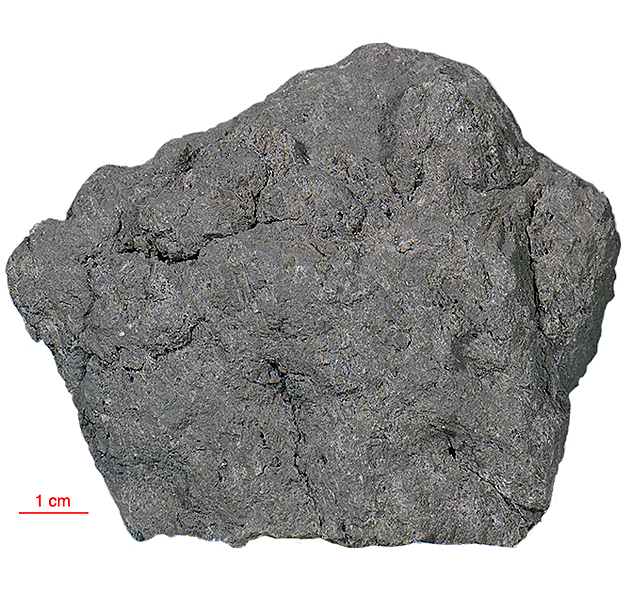
Fact sheet
15476 is a porphyritic pigeonite mare basalt with large phenocrysts, a radiate, finer-grained groundmass and a distinct foliation or lineation. It is an average-member of the quartz-normative mare basalt suite. It is light brown with green to brown zoned prismatic pyroxene phenocrysts and a few percent vugs. The cores of large pyroxene phenocrysts are relatively unzoned, with a rather sharp boundaries when they transition to high-Ca, high-Fe margins. Some pyroxene phenocrysts appear to have grown with hollow cores, now filled with fine-crystalline matrix. The overall texture indicates a two stage cooling history. The groundmass between the phenocrysts locally has variable texture from radiate to sub-ophitic. Accessories include ilmenite, cristobalite, troilite and metallic iron.
The sample weighed 266.3 grams before analysis. It has not been dated, however, another pigeonite basalt, with strikingly similar texture (15682) has been dated at 3.4 b.y.
Further details of this and other Apollo samples are here: http://curator.jsc.nasa.gov/lunar/
The Apollo 15 landing site was in the Apennine Highlands, and close to Hadley Rille — a long, narrow winding valley. Approximately 76 kg of lunar material, including soil, rock, core-tube and deep-core samples, were returned to Earth.
This mission was the first flight of the Lunar Roving Vehicle which allowed the astronauts to venture further from the Lunar Module than in previous missions. During three periods of extravehicular activity, or EVA, on July 31st, and August 1st and 2nd, Scott and Irwin completed a record 18 hours, 37 minutes of exploration, travelling 17.5 miles, in the first car that humans had ever driven on the Moon.
Apollo 15 was launched on 26 July 1971.






